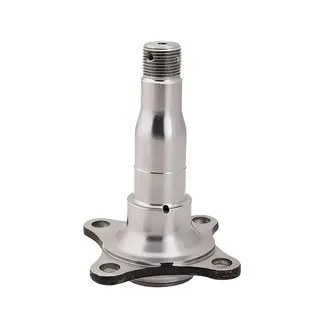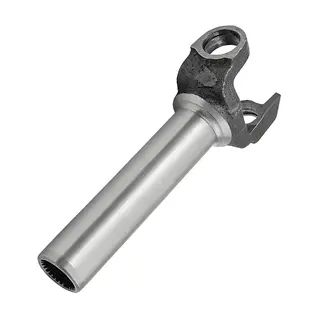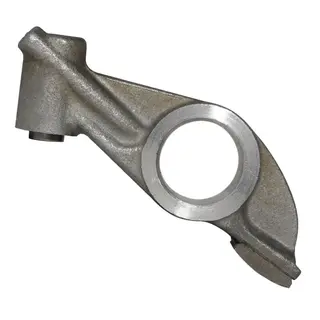In modern manufacturing, aluminum alloys are widely used in aerospace, automotive, machinery manufacturing, and other fields due to their lightweight, high strength, and corrosion resistance. As a key processing method, aluminum alloy forging is essential to ensure its performance and quality. This article will explore the main forging methods, process flows, common defects, and comparisons with casting, providing readers with a comprehensive understanding of this important process.
Aluminum alloy forging is a processing method that applies external force to induce plastic deformation in aluminum alloy materials to achieve the desired shape and size. According to different processing methods and equipment, aluminum alloy forging can be divided into the following main methods.
Free forging is one of the basic methods of aluminum alloy forging. It mainly relies on manual or mechanical force to deform aluminum alloy ingots or billets locally or overall. During free forging, workers select suitable forging tools and equipment based on the shape and size requirements of the forging. By hammering or compressing, the aluminum alloy material undergoes plastic deformation to achieve the required shape.
The advantages of free forging lie in its flexible operation and strong adaptability, capable of meeting various complex shape and size requirements. For example, for large and irregularly shaped parts, free forging can effectively satisfy production needs. However, this method also has limitations. Since it mainly depends on manual operation, the production efficiency is relatively low, and it requires high skill levels from workers. Experienced and skilled workers are necessary to ensure the quality and precision of the forgings.
Die forging is another important method in aluminum alloy forging. Unlike open die forging, die forging uses molds to shape aluminum alloy materials. Through precise mold design and manufacturing, complex-shaped and dimensionally accurate forgings can be obtained. In die forging, the aluminum alloy material is heated to a specific temperature and then pressed into the mold.
The design and manufacturing of molds are key steps in die forging. Designers must consider factors such as material flow and mold wear resistance to ensure mold lifespan and forging quality. Die forging offers high production efficiency and excellent forging quality, widely applied in the production of aluminum alloy forgings. For example, critical automotive engine components like connecting rods and crankshafts are typically manufactured using die forging to ensure high strength and precision.
Extrusion forging uses an extrusion press to deform aluminum alloy materials plastically. During extrusion, the aluminum alloy is heated to a specific temperature, then forced through a die by the extrusion press, causing the material to flow and deform plastically. Extrusion forging can produce complex-shaped, dimensionally precise aluminum profiles and tubes.
Extrusion forging offers high production efficiency and high material utilization. Because the material flows along the shape of the die, material waste is minimized. However, this method also has challenges. Equipment investment is high, requiring precision extrusion presses and dies. Additionally, operational skills are demanding, and workers must undergo rigorous training to master the process.
Continuous forging is an efficient aluminum alloy forging method. This method achieves continuous processing of aluminum alloy materials through continuous feeding and forging. In continuous forging, the material is heated to a specific temperature and fed into the forging machine via a continuous feeding system.
Continuous forging has the advantages of high production efficiency and stable product quality, suitable for large-scale production of aluminum alloy forgings. For example, in producing automotive wheel hubs in bulk, continuous forging significantly improves efficiency and reduces production costs. However, it requires highly automated and stable equipment, with advanced control systems and maintenance teams to ensure smooth production.
The process flow of aluminum alloy forging is a critical stage in ensuring product quality and performance. From the preparation of raw materials to the final precision machining and surface treatment, every step is essential. The main process flow of aluminum alloy forging is as follows.
Preparation of raw materials is the first step in aluminum alloy forging and forms the foundation for ensuring product quality. Using high-quality aluminum alloy materials guarantees the reliability and quality of the products. These materials undergo rigorous quality inspections to ensure compliance with international standards. For example, aluminum alloys used in the aerospace industry require extremely high purity and precise composition control, and must pass a series of strict tests before being used.
Molds are key tools in aluminum alloy forging, and their precision and quality directly affect the shape and dimensions of the forged parts. Advanced mold manufacturing equipment and skilled technical teams can produce precise molds according to customer requirements. Mold design must consider factors such as material flow and mold wear resistance to ensure the mold’s lifespan and the quality of the forged parts.
Preheating is an important step in aluminum alloy forging. It improves the plasticity and forgeability of aluminum alloy, making it easier to form the desired shape during forging. Advanced preheating equipment and techniques ensure proper temperature and time control. For instance, induction heating can quickly and evenly heat the aluminum alloy to the required temperature, improving production efficiency.
Forging is the core step in aluminum alloy forging. Experienced workers place the heated aluminum alloy into the mold and apply appropriate force using hammers or presses. Through hammering or pressing, the aluminum gradually takes the desired shape and structure. In this process, the workers' experience and skill are crucial, as they must precisely control forging force and timing according to the material characteristics and mold requirements to ensure the quality and accuracy of the forged parts.
After forging, cooling and annealing treatments are necessary. The cooling process stabilizes and solidifies the aluminum alloy structure, making it stronger and more durable. Annealing relieves stresses generated during forging, enhancing the performance and reliability of the aluminum alloy. For example, by controlling the cooling rate, internal cracks and stress concentrations in the forged parts can be avoided, thereby extending product lifespan.
Finally, precision machining and surface treatment are performed. Precision machining includes processes such as drilling, milling, and cutting to ensure dimensional accuracy and product quality. Surface treatment includes sandblasting, polishing, and electroplating to enhance appearance and corrosion resistance. For example, automotive wheel hubs, after forging, typically undergo sandblasting to remove surface impurities and oxide layers, followed by polishing and electroplating to achieve a smooth surface with strong corrosion resistance.
Although aluminum alloy forging offers many advantages, defects can occur, affecting appearance, performance, and lifespan. Understanding and preventing these defects is essential for quality improvement.
Coarse grains often result from excessively high initial forging temperatures, insufficient deformation, or critical deformation zones. Excessive deformation can form textures; low-temperature deformation of high-temperature alloys can create mixed microstructures. Coarse grains reduce plasticity, toughness, and fatigue performance.
Uneven grains occur when some areas of the forging have coarse grains while others are fine. Causes include uneven deformation of the billet, critical deformation zones, partial work hardening, or improper quenching. Uneven grains reduce durability and fatigue resistance.
Low temperature, high deformation speed, or rapid post-forging cooling can prevent softening from recrystallization from keeping up with strengthening from deformation, leaving local cold-worked structures. This increases strength and hardness but reduces plasticity and toughness. Severe work hardening can cause forging cracks.
Cracks are caused by high tensile or shear stresses during forging. They usually appear in high-stress or thin areas. Surface or internal microcracks, material defects, improper heating, excessive deformation speed, or high deformation levels can all lead to cracks during upsetting, elongation, punching, expanding, bending, or extrusion.
Aluminum alloy forging and casting are distinct forming methods, each with its characteristics and applications. Understanding their differences helps select the right process.
Aluminum Alloy Forging: Forging uses a press to shape aluminum alloy at specific temperatures, offering high dimensional accuracy, uniform internal structure, excellent mechanical properties, and smooth surfaces. Critical components like automotive wheel hubs and aircraft engine blades are forged to ensure strength and precision. Forged parts are generally sturdy and durable.
Aluminum Alloy Casting: Casting melts aluminum alloy and pours it into molds to solidify. Casting is flexible, cost-effective, and suitable for mass production of simpler shapes, such as engine blocks or simple automotive wheel hubs. However, castings are more brittle, and material properties depend on process parameters.
Comparison: Forging and casting each have advantages. Forging suits small, complex, high-precision parts, while casting suits mass production of simple parts. Process selection requires considering product requirements, costs, and efficiency to achieve optimal results.
Aluminum alloy forging is a vital processing method in modern manufacturing. Methods such as open die forging, die forging, extrusion forging, and continuous forging meet diverse shape, size, and precision needs. However, defects like coarse grains, uneven grains, work hardening, and cracks can occur, affecting performance and lifespan. Understanding these defects and implementing preventive measures is essential for quality improvement. In summary, aluminum alloy forging is both a technology and an art, requiring skill, advanced equipment, and rigorous process control to produce high-quality products.



